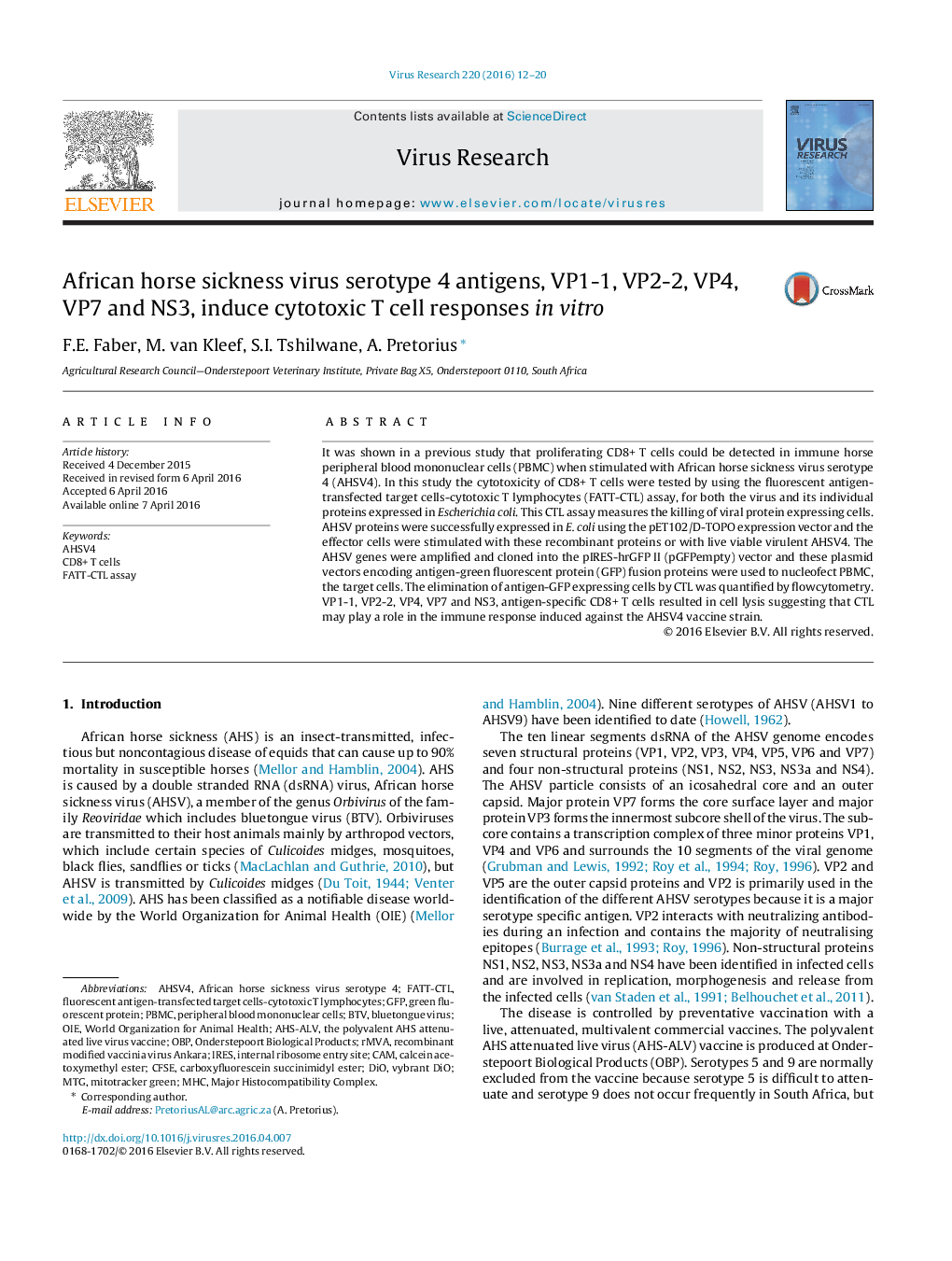| Article ID | Journal | Published Year | Pages | File Type |
|---|---|---|---|---|
| 6142051 | Virus Research | 2016 | 9 Pages |
â¢Optimised the FATT-CTL assay for use with horse PBMC.â¢Antigen-specific CD8+ T cells were detected against VP1-1, VP2-2, VP4, VP7 and NS3.â¢Cell lysis was detected in a CTL assay against VP1-1, VP2-2, VP4, VP7 and NS3.
It was shown in a previous study that proliferating CD8+ T cells could be detected in immune horse peripheral blood mononuclear cells (PBMC) when stimulated with African horse sickness virus serotype 4 (AHSV4). In this study the cytotoxicity of CD8+ T cells were tested by using the fluorescent antigen-transfected target cells-cytotoxic T lymphocytes (FATT-CTL) assay, for both the virus and its individual proteins expressed in Escherichia coli. This CTL assay measures the killing of viral protein expressing cells. AHSV proteins were successfully expressed in E. coli using the pET102/D-TOPO expression vector and the effector cells were stimulated with these recombinant proteins or with live viable virulent AHSV4. The AHSV genes were amplified and cloned into the pIRES-hrGFP II (pGFPempty) vector and these plasmid vectors encoding antigen-green fluorescent protein (GFP) fusion proteins were used to nucleofect PBMC, the target cells. The elimination of antigen-GFP expressing cells by CTL was quantified by flowcytometry. VP1-1, VP2-2, VP4, VP7 and NS3, antigen-specific CD8+ T cells resulted in cell lysis suggesting that CTL may play a role in the immune response induced against the AHSV4 vaccine strain.
